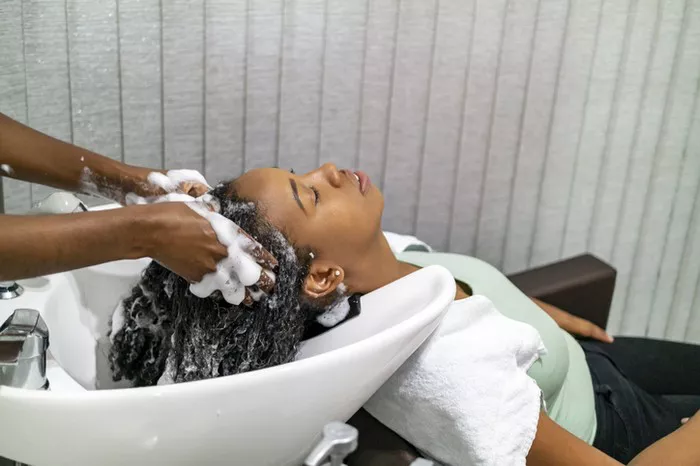Bleaching can give your hair the bright, bold look you desire, but it comes at a cost. Hair breakage is one of the most common side effects of chemical bleaching. This happens because the bleaching process strips away the natural moisture and protective proteins from your hair, leaving it fragile and prone to snapping. If you are struggling with damaged locks, this guide will walk you through practical and effective ways to restore your Hair Health at home.
Signs of Bleached Hair Breakage
Recognizing the early signs of hair breakage is essential to prevent further damage. Here’s what to look for:
- Excessive shedding and shorter, uneven hairs
- Dryness and rough texture
- Split ends and mid-shaft splits
- Hair that easily snaps when brushed or styled
- Frizz and lack of natural curl pattern (especially for Curly Hair)
How to Fix Bleached Hair Breakage at Home
1. Gentle Cleansing
Switch to a sulfate-free, moisturizing shampoo. Sulfates can strip your already compromised hair of the little moisture it has left. Focus on cleaning your scalp while being gentle with the strands.
2. Deep Conditioning is Non-Negotiable
Incorporate Deep Conditioning treatments into your routine at least twice a week. Look for products with proteins like keratin, collagen, and silk amino acids, as they help rebuild the hair’s structure.
3. Hair Oils for Extra Nourishment
Applying Hair Oils like argan oil, coconut oil, or jojoba oil can work wonders. These oils penetrate the hair shaft and provide deep hydration. Using a Hair Oil overnight treatment once a week can significantly enhance your hair’s resilience and shine.
4. Protein Treatments
When hair is bleached, it loses protein, weakening its core. Protein treatments rebuild the hair shaft. Use a balanced protein treatment once every 4-6 weeks to reinforce your hair’s integrity without causing stiffness.
5. Reduce Heat Styling
Hot tools can exacerbate breakage. If you must use them, always apply a heat protectant and keep the temperature as low as possible. Embrace air drying whenever you can.
6. Trim Regularly
Although it might be hard to let go of length, trimming split ends is vital to prevent them from traveling up the hair shaft and causing more breakage.
7. Protective Hairstyles
Loose braids, buns, and protective styles can minimize friction and mechanical damage. Avoid tight styles that pull on the hairline, as they can lead to conditions like Traction Alopecia.
8. Nutrition for Hair Health
What you eat plays a massive role in Hair Care. Ensure your diet includes plenty of vitamins, minerals, and proteins. Supplements targeting hair, skin, and nails can be an added boost if your diet needs support.
Special Situations Impacting Hair Recovery
PCOS and Hair Breakage
Women with Polycystic Ovary Syndrome (PCOS) often struggle with hair thinning and breakage due to hormonal imbalances. If you have PCOS, strengthening your hair externally with treatments and internally through hormonal management is critical for recovery.
Hair Transplant Considerations
In severe cases of breakage leading to permanent thinning, procedures like Follicular Unit Transplantation (FUT) and Follicular Unit Extraction (FUE) might be considered. Although typically used for genetic conditions like Androgenetic Alopecia, they can help if the hairline or density has been severely compromised.
Home Remedies for Bleached Hair Breakage
Avocado Mask
Mash one ripe avocado with two tablespoons of olive oil and apply it to damp hair. Leave it on for 30 minutes before rinsing. This mask is rich in essential fatty acids that strengthen hair.
Egg and Yogurt Treatment
Eggs are high in protein, and yogurt offers moisture. Mix one egg with two tablespoons of yogurt and apply as a treatment mask once a week.
Aloe Vera Gel
Aloe vera soothes the scalp and conditions the hair. Apply pure aloe gel from the plant directly to your hair as a pre-shampoo treatment.
When to Seek Professional Help
If your hair is experiencing breakage along with thinning patches, bald spots, or you notice symptoms of Alopecia Areata, Postpartum Hair Loss, or Menopausal Hair Loss, consult a dermatologist or trichologist. Hair loss caused by underlying conditions like PCOS or genetic issues often requires medical intervention alongside at-home care.
Tips for Maintaining Results
- Continue regular deep conditioning
- Protect hair from environmental damage with hats or scarves
- Keep hair moisturized daily with light leave-in treatments
- Choose satin pillowcases to reduce friction overnight
- Be patient—hair recovery is a journey, not a race
Conclusion
Bleached hair breakage can feel overwhelming, but with consistent care, it’s possible to restore strength, shine, and resilience. Embrace a holistic approach by combining external treatments, mindful styling, and good nutrition. Follow these Hair Health Tips to nourish your hair back to its former glory—and remember, every small step counts toward your ultimate goal of vibrant, healthy hair.
Related topics:
- What Hair Oil Should I Use?
- Hair Products for Curling: The Ultimate Guide
- What Can I Use to Moisturize My Hair?


